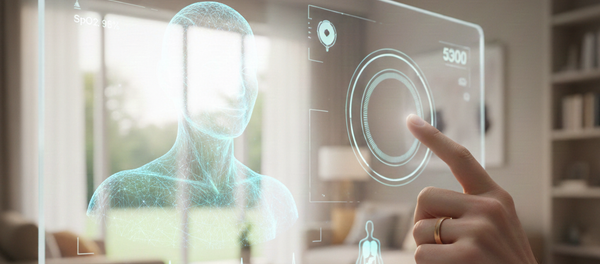Exploring Your Attachment Style with AI

Whether it’s a friendship that always feels a little one-sided, a romantic relationship that swings between closeness and distance, or a tendency to keep people at arm’s length, we all have patterns in how we connect. These patterns aren’t random, they’re shaped by our early experiences, the relationships we observed growing up, and the ways we learned to feel safe (or unsafe) with others.
Psychologists call these patterns attachment styles. They’re not labels meant to box you in forever, but rather a map of how you tend to think, feel, and behave in close relationships. Knowing your attachment style can be surprisingly powerful, it helps you understand why certain situations trigger you, why some relationships feel easy while others are exhausting, and what steps you can take to feel more secure.
The good news? These styles aren’t fixed. With awareness, reflection, and practice, they can shift over time. And thanks to recent advances in AI, you don’t have to figure it all out alone. Now, you can explore your attachment style in a private, supportive space, one that listens without judgment and is available whenever you need it.
The Four Main Attachment Styles in Real Life
Attachment theory can sound academic, but at its heart, it’s about something we all understand: how we give and receive love. While every person is unique, research identifies four common styles that describe our default patterns in close relationships. Seeing them in action often makes them click.
Secure Attachment
People with a secure attachment style feel comfortable with both closeness and independence. They can rely on others without losing themselves, and they can be relied upon in return. A securely attached friend might text you back promptly, remember important details about your life, and handle conflicts without spiraling. It’s not about being perfect, it’s about feeling safe enough to be open and honest.
Anxious Attachment
If you’ve ever felt a wave of worry when someone takes too long to reply or you find yourself replaying a conversation to see if you did something wrong, you might relate to an anxious attachment style. People with this style often crave closeness but fear abandonment. They may overanalyze small changes in tone or behavior, which can make relationships feel like an emotional roller coaster.
Avoidant Attachment
Avoidant types value independence to the point where closeness can feel threatening. They might pull away when relationships get too intense, struggle to express emotions, or avoid relying on others altogether. It’s not that they don’t care — in fact, many deeply value their relationships, but intimacy can stir up discomfort they’re not sure how to handle.
Disorganized Attachment
Also called fearful-avoidant, this style combines elements of both anxious and avoidant tendencies. Someone might crave closeness yet push it away when it arrives. Relationships can feel confusing or chaotic, with rapid shifts between wanting connection and needing distance. This style often develops from inconsistent or unpredictable caregiving experiences early in life.
Understanding your own style isn’t about judgment. It’s about shining a light on the habits and fears you might not even realize you carry and seeing how they show up in everyday moments. Once you see the patterns, you can start to gently shift them.
How AI Can Help You Explore Your Style
Traditionally, understanding your attachment style meant reading psychology books, taking online quizzes, or talking it through with a therapist. These can all be valuable but they’re not always accessible, affordable, or available in the moment you need them most. This is where AI can offer a new kind of support.
A conversational AI, like Aitherapy, acts as a patient, always-available listener. You can describe a recent interaction that left you feeling uneasy, and it can ask clarifying questions to help you see what might be happening beneath the surface. It can notice recurring themes perhaps you often fear people will lose interest in you, or you tend to shut down when conversations get emotional.
Because AI doesn’t judge, you can be brutally honest without worrying about how it “sounds.” It’s also there whenever you are at 2 a.m. after an argument, during a lunch break, or on a Sunday afternoon when you’re feeling reflective. For many people, this round-the-clock access lowers the barrier to self-awareness work.
AI tools can also guide you through exercises designed for your style. An anxious-leaning person might get prompts to build self-soothing skills and strengthen a sense of security without constant reassurance. Someone with avoidant tendencies might be encouraged to take small, safe steps toward vulnerability. These suggestions aren’t meant to replace human guidance but can complement it, giving you a steady companion on your journey.
The real magic happens when AI blends active listening with actionable steps. You’re not just talking, you’re learning how to respond differently, right when your patterns show up.
Turning Insight into Action
Understanding your attachment style is a powerful first step, but insight without action rarely changes much. The real growth begins when you start practicing new ways of thinking and relating and AI can make that practice more consistent and personalized.
If you’ve discovered you have an anxious attachment, your AI companion might encourage daily check-ins to help you notice when your mind jumps to worst-case scenarios. Together, you can work on grounding techniques, like breathing exercises or reframing thoughts, to calm that sense of urgency before it spills into your relationships.
For avoidant tendencies, the AI might prompt you to share one personal detail with someone you trust each week. This could be as simple as telling a friend how your day really went instead of saying “fine.” Over time, these small acts help reduce the discomfort around emotional openness.
If your style is disorganized, AI guidance might focus on building both safety and trust, sometimes through visualizing secure relationships, sometimes through reflecting on past experiences in a structured, gentle way. This gradual process can help untangle the push-pull dynamic that makes closeness feel both wanted and threatening.
Journaling is another powerful tool AI can guide. Instead of a blank page, you might get targeted prompts like:
- “Think of a moment today when you felt especially connected to someone. What made it feel safe?”
- “When was the last time you pulled away from someone? What did you need in that moment?”
The beauty of AI is that it can remember your past reflections and nudge you toward patterns you might miss. It’s like having a curious, supportive partner who keeps you accountable without ever making you feel pressured or judged.
A Healthier Relationship with Yourself and Others
At its core, exploring your attachment style isn’t about putting yourself into a neat psychological box, it’s about understanding the emotional blueprint that guides your connections. Once you see the patterns, you gain the freedom to shape them, rather than letting them shape you.
AI support can make this journey less intimidating and more consistent. It offers a safe, judgment-free space to explore your fears, celebrate your progress, and experiment with new ways of relating. Over time, these small, deliberate shifts can help you build relationships that feel secure, respectful, and nourishing whether that’s with a partner, friends, family, or even with yourself.
The process takes patience. Some days you’ll notice immediate progress, while other days will feel like you’ve slipped back into old habits. That’s normal. Growth is rarely a straight line. What matters is that you keep showing up to the conversations, the reflections, and the small acts of courage that move you forward.
By blending human connection with AI guidance, you can create a support system that’s always there when you need it. Think of it as a steady hand in the background, helping you notice your triggers, encouraging healthier responses, and reminding you of the progress you’ve already made.
Your attachment style is not your destiny. With awareness, practice, and the right kind of support, human and AI, you can write a new story for your relationships. One where connection feels less like a risk, and more like a gift you know how to give and receive.
Ready to explore your attachment style?
Start talking with Aitherapy today and start uncovering the patterns that shape your relationships. With 20 free messages every day and guidance that’s available whenever you are.





